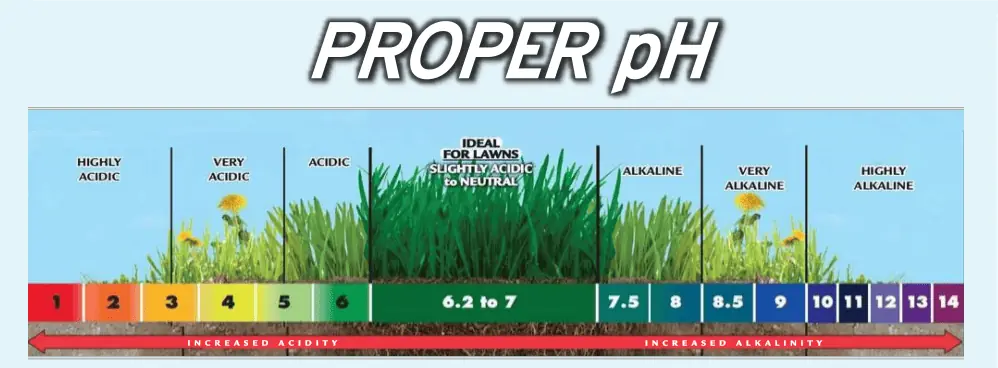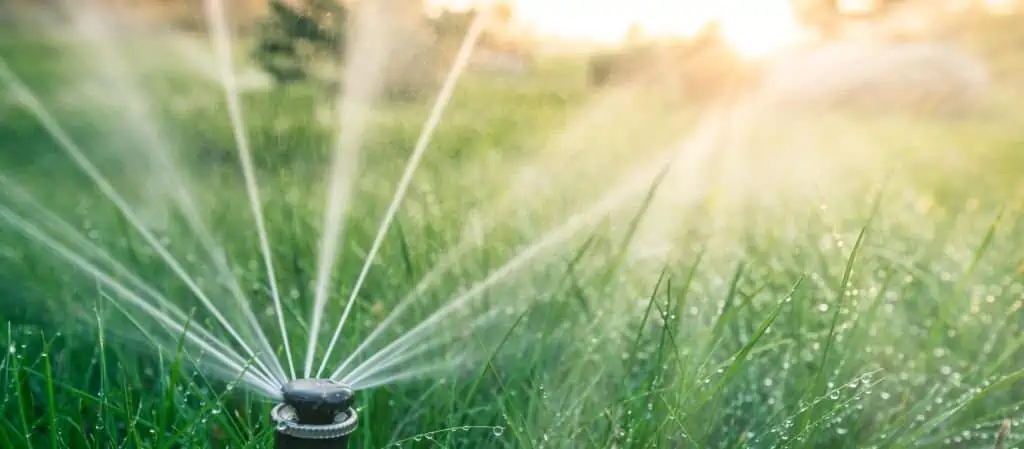Brown Grass Tips: What’s Wrong With Your Grass?
Beautiful, incredible, sightly, superb. These are some words used to describe a lawn with everything going for it. But lovely lawns are not free from attacks and infestations from pests and diseases. One is brown tips, typically at the tip of your grass.
Brown grass tips are not just unsightly to behold, but they also indicate that your grass is unhealthy. If that’s the case, brown tips are difficult to eliminate, especially if you want to return them to their lush condition.
The causes of brown tips can come from various issues, such as soil acidity, high humidity levels, and too much nitrogen. Thankfully, those issues are discussed here and give you an insight into how to identify them and the best ways to restore your grass. Read on!
Brown Tips on Grass: Common Causes
When your grass’s tips start getting brown, many things rush through your mind. What you’d want the most is getting the grass back to its original condition. That’s not easy, especially if the situation has gone unnoticed. Nonetheless, here are the primary reasons why your grass has brown tips:
1. High Acidic Levels in the Soil

The fertilizer is excellent and works wonders for your soil, but it comes at a cost. When consistently applied, fertilizer can make your grass look dry and brown. That’s because there’s usually too much nitrogen packed into some modern fertilizers.
In the long run, your soil gets affected by high acidic levels. What follows is brown tips on your once lush, green grass.
2. Direct Sunlight on Grass
Sunlight is ultimately necessary for photosynthesis and general plant growth. But too much direct sunlight can cause the emergence of brown tips on your grass. In addition, many grass species cannot withstand anything warmer than 90 degrees Fahrenheit (32 Celsius).
If you live in an extremely hot or cold area, consider changing your grass type to suit the prevailing weather conditions.
3. Parking and Driving on Lawn

There’s a reason why many homeowners use all kinds of items to keep people, pets, and machines off their lawns – they want to maintain their good condition. When you drive or park cars on the grass, that act can damage the soil’s pH and composition.
Further, cars drop oil and air condition fluid on the grass, leading to brown or yellow tips. In some cases, the whole length of the grass dies out in little time. The dropped fluids can also damage and shrink the roots of your grass.
It’s best you, and anyone else avoids parking on the grass to preserve the oxygen supply to the soil.
4. Heavy Winds
Yep. Heavy winds can do a lot of damage, including drying the tips of your grass, making them brown or yellow. If you live in an area with constant wind driving through, brown grass tips are only a matter of time.
Heavy winds for a few days will likely leave your lawn in the same condition. More than that, brown tips can form.
5. Inadequate Watering

Water is essential to growing healthy grass, like sunlight, a good base soil, and nutrients. Without all that, don’t expect to get a fancy lawn that is the envy of your neighborhood.
Your watering schedule should be good enough to see your grass enjoy adequate water to thrive. Inadequate watering is a huge cause of your grass tips turning brown.
6. Unplanned Spills
A few drops from the wrong liquid or fluid can lead to brown tips and spots in your lawn. Mower spilling gasoline, pet urine, and other spills can leave brown spots over time. Avoid such spills wherever you can, especially from your mower. Pets can have a dedicated area to do their business far from your lawn.
Brown Tips on Grass: Fixes and Prevention
So far, this article has pointed out why your grass has brown tips. The pH level, lack of watering, and direct sunlight are contributing factors. However, you can prevent brown tips or fix them when they occur. The following suggestions will prove handy:
1. Give Acidic Fertilizer a Break
Fertilizers can burn your lawn and ruin your soil. Sure, fertilizer boosts plant growth, but you should take a break from applying it on your soil to prevent or contain brown tips. Experts recommend using fertilizer only when using grass seed or filling patchy spots across your lawn.
You don’t want a situation where continuous use of acidic fertilizer kills your lawn in the long run or stunts grass growth.
2. Add Lime to the Soil
This is particularly important if the soil has a high acidic level. First, check the pH level of the ground; there are tools to help you monitor your grass’s soil, moisture, and light. Three of them are crucial for growing healthy, vibrant grass.
Secondly, add like to the soil. You should do this over time rather than continue with nitrogen fertilizers.
3. Don’t Allow Vehicles on the Grass
Whether you have to use rocks, fences, trees, or signs, do your best to keep vehicles off your grass. The less said about tire marks, the better.
Vehicles could leave holes behind, impede grass growth, and cause brown tips. You’ll have significant work restoring the grass to previously lush and healthy conditions.
4. Loosen up the Soil
Dense soil mostly goes unnoticed, making it difficult for roots to grow properly. A sure sign of that reflects on the grass with brown tips.
When your grass has trouble spreading its roots, it’ll appear brown, yellow, and dull. Use a rake or other tool to loosen the soil to avoid damaging your lawn.
5. Use a Watering Schedule
Consider having a proper watering schedule where your grass receives adequate water for healthy growth. You can do that with a sprinkler system or other irrigation methods, especially if your lawn faces hot conditions.
Whatever you choose, it’s best to stick to a routine that helps your lawn thrive. Also, the watering system you choose mostly depends on the grass type. Some grasses do not need much water, while others do.
Can Brown Grass Tips Become Green Again?
Yes. Brown grass can turn green again if you perform most preventive measures above. For example, you must adjust the soul’s pH, draw up a wagering schedule, and loosen the soil across different spots. Further, you must choose the right type of grass for your yard, which can avoid brown tips in the first place.
Generally, following a routine schedule, your grass can return to its green, healthy appearance in three to eight weeks.
Another thing that can eliminate brown tips and restore your grass is organic lime. It increases the pH of the soil naturally. Ditch the nitrogen fertilizer for this alternative, but ensure you measure your lawn before treating it with lime.
Experts recommend multiplying your lawn’s length and width to know how much lime to apply. The road to recovery can be long from brown grass tips, so be patient.
Why is Grass Still Brown After Watering?
Your grass remains brown even after watering, thanks to the soil’s pH level, which is acidic. Another reason is that the grass is too hot.
Adding enough water can prevent long-term root damage but won’t affect the pH levels. You can test the soil monthly to prevent it from getting too acidic for your grass.
In some cases, direct sunlight will still affect your grass, even after watering. The tips get brown from the contact and resultant heat. Try to stick to the watering schedule and mow the lawn to improve its health.
Should Brown Grass Tips be Mowed?
If your grass tips are brown, you can mow them down. Early spring mowing is best, so you will naturally bring out the greener grass blades. Mowing may even help to stimulate grass growth.
Further, some experts recommend giving the grass more time to green up, especially in warmer climes. A good mowing certainly won’t hurt the lawn, at any rate. Remember to mow grass to 3 to 3.5 inches high if your lawn is established. That way, it is less prone to insect, disease, and weed problems.
Generally, it would help if you mowed frequently. However, cut off at most a third of the height each time. Additionally, trim only when the grass is dry to prevent clumping and leave the clippings on your lawn. Doing so will save you time and money, and the grass clippings will break down and return valuable nutrients to the soil.
Conclusion
Grass with brown tips doesn’t create the same appearance or feeling of accomplishment an all-around lush, green lawn does. That’s why you must take precautions to make sure the brown tips never appear.
Thankfully, this article has done more than that by identifying the problem and introducing possible solutions to prevent and manage brown grass tips.
Do your bit to maintain the ideal pH level, follow a proper watering schedule, and go natural when adding nutrient-boosting materials to your grass. Brown grass can become green again, which might take three to eight weeks.
Now that you know this, planting grass suitable for your living area is best. That’s the ultimate first step to preventing brown grass tips.






